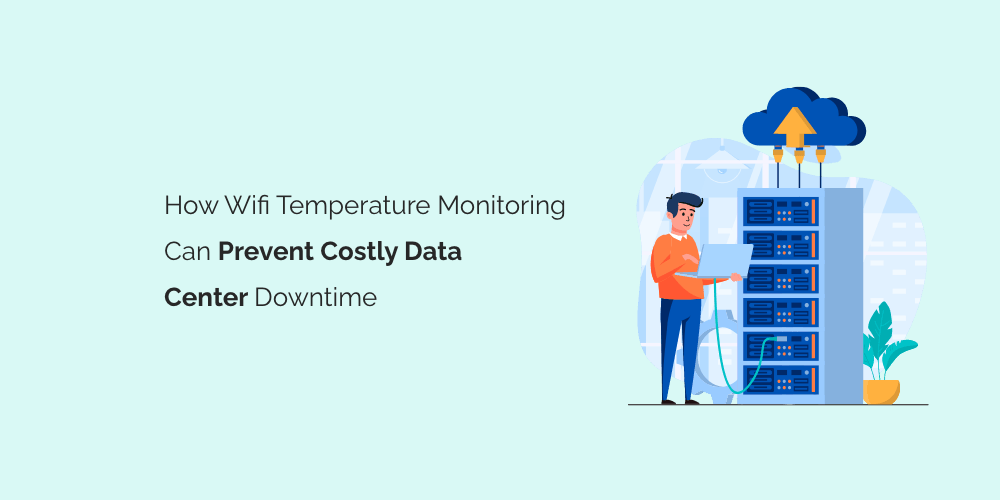The Importance of Temperature Monitoring in Data Centers
In a data center, every component generates heat, and if the temperature rises beyond a certain threshold, it can cause equipment failure, data corruption, and system crashes. Such occurrences can result in lost revenue, reputation damage, and stress for IT professionals.
Temperature monitoring is critical to ensure that the temperature in the data center is always under control, and any temperature fluctuations are detected in real-time. With advancements in technology, WiFi temperature monitoring has become a reliable and convenient solution.
How WiFi Temperature Monitoring Works and Its Advantages
WiFi temperature monitoring systems are designed to continuously monitor temperature and humidity levels in data centers and alert the IT team if they fall outside the pre-set thresholds. These systems use sensors installed in various locations of the data center and transmit the data wirelessly to a central monitoring device.
The primary advantage of WiFi temperature monitoring is the ability to monitor temperature and humidity levels in real-time, enabling immediate corrective actions to be taken if necessary. This is particularly important in data centers, where even a small change in temperature or humidity levels can significantly impact the equipment's performance and reliability.
WiFi temperature monitoring allows tracking and analyzing historical data, which helps identify potential issues before they become critical and develop more effective strategies for maintaining optimal temperature and humidity levels. The systems can also be integrated with other data center management tools, such as remote management software, to provide a comprehensive view of the data center environment.
Best Practices for Implementing WiFi Temperature Monitoring in Data Centers
Implementing WiFi temperature monitoring in a data center requires careful planning and execution. Here are some best practices to consider:
- Define the data center's optimal temperature and humidity thresholds based on the equipment requirements and manufacturer specifications.
- Install sensors in key locations throughout the data center, including server racks, cooling systems, and hot spots.
- Test the sensors and monitoring system before deploying them in the data center to ensure they are working correctly.
- Ensure that the monitoring system can send alerts and notifications to the IT team via email, SMS, or other methods.
- Regularly review and analyze the data collected by the monitoring system to identify trends and potential issues.
- Implement corrective actions promptly when alerts are received, or when temperature and humidity levels fall outside the optimal threshold
The Role of Alerts and Notifications in Preventing Costly Downtime
Receiving real-time alerts and notifications is one of the primary advantages of WiFi temperature monitoring. These alerts can be sent via email, SMS, or other methods, enabling IT teams to respond quickly to potential issues.
By receiving alerts and notifications, IT teams can take immediate corrective actions, such as adjusting the cooling systems or relocating the equipment to a different area of the data center. This proactive approach can prevent costly downtime and reduce the risk of equipment failure.
However, it's important to note that alerts and notifications should not be the only means of monitoring temperature and humidity levels. Regular manual checks and data analysis should also be conducted to ensure the accuracy and effectiveness of the monitoring system.
Data Analysis and Predictive Maintenance to Prevent Future Downtime
WiFi temperature monitoring systems provide valuable data that can be used to improve data center performance and prevent future downtime. By analyzing historical data, IT teams can identify trends and patterns that may indicate potential issues or inefficiencies.
Data analysis can be used to implement predictive maintenance strategies. By identifying potential issues before they become critical, IT teams can schedule maintenance activities during non-peak hours, reducing the impact on operations The data center industry is constantly evolving, and IT professionals need to be proactive in staying up-to-date with the latest trends and technologies in temperature monitoring. With the increasing demand for data storage and processing, data centers are becoming more complex, and the risk of downtime is higher than ever before.
As an expert in server room maintenance, I highly recommend implementing WiFi temperature monitoring as part of your data center management strategy. By doing so, you can rest assured that your data center is being monitored around the clock and that any issues are being addressed in real time.
If you're not sure where to start with implementing WiFi temperature monitoring, don't hesitate to reach out to a professional for guidance. With their expertise and experience, they can help you choose the right monitoring system, configure it to meet your specific needs and provide ongoing support to ensure that your data center remains operational at all times.
In today's digital age, data is king, and data centers are the backbone of the digital economy. Don't let a temperature spike bring your operations to a halt. Take proactive steps to ensure that your data center remains operational and secure and that your business continues to thrive.
Author name: Chip Thermiston
About the Author: Chip Thermiston is a self-proclaimed tech guru and lover of all things temperature-related. With a degree in Thermodynamics and years of experience in the data center industry, he knows just how important it is to keep things cool - and how WiFi temperature monitoring can help prevent costly downtime.








